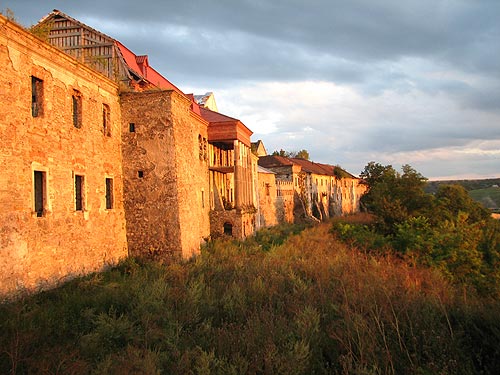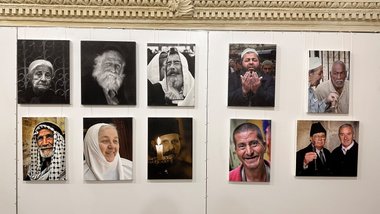The Last Outpost of Christianity in Podillya
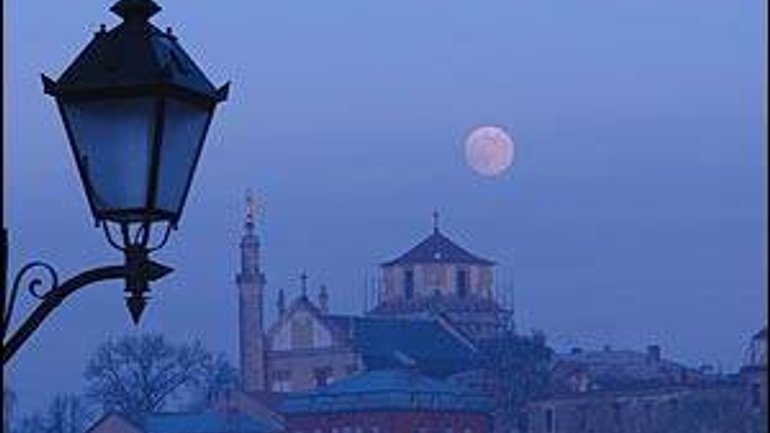
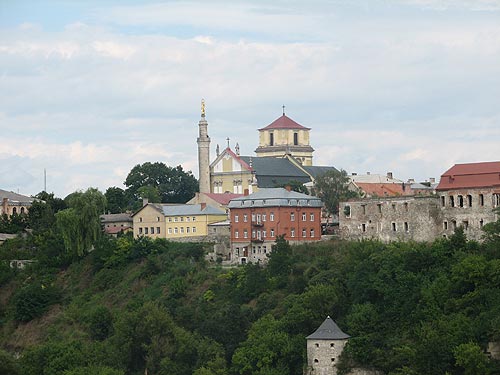
In Kam’yanets-Podilskyj everyone knows the story about how long ago in 1621 the Turkish Sultan Osman approached the walls and asked the locals:
“Who fortified this city?”
“God,” they replied
“Then let God acquire it” stated Osman as he stepped away from the beautiful and unassailable city.
A UNIQUE CITY
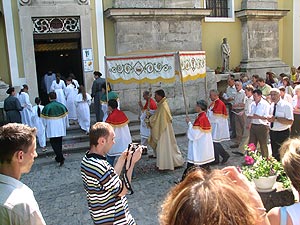 When touring unique cities, one must not miss Kam’yanets-Podilskyj in the Khmelnytskyj oblast. After Kyiv and L’viv, Kam’yanets-Podilskyj is the third city in Ukraine with the most historical monuments (there are 177) and one of the seven wonders of the Ukraine. Kam’yanets deserves to become a tourist Mecca. For those who are interested in religion, architecture, and history—this is a true Klondike.
When touring unique cities, one must not miss Kam’yanets-Podilskyj in the Khmelnytskyj oblast. After Kyiv and L’viv, Kam’yanets-Podilskyj is the third city in Ukraine with the most historical monuments (there are 177) and one of the seven wonders of the Ukraine. Kam’yanets deserves to become a tourist Mecca. For those who are interested in religion, architecture, and history—this is a true Klondike.
The most famous legend about the founding of Kam’yanets-Podilskyj is that deer escaping from Lithuanian hunters—knights of Koriatovych—gathered on an island and showed their brothers an extraordinary place for establishing a city. The brothers settled there and ever since statues of deer guard against advances into Kam’yanets-Podilskyj.
Scholars still have not agreed on a date for the foundation of Kam’yanets-Podislkyj. Most believe that the city is over a thousand years old, but there are those who confirm that Kam’yanets existed already in the times of Ancient Rome.
A FLOWER ON STONE
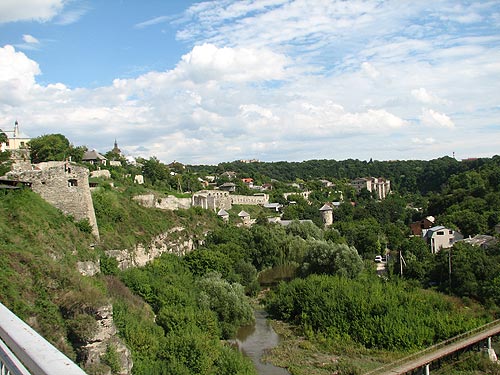
That is how Kam’yanets-Podilskyj was named by the famous Ukrainian poetess Lesia Ukrajinka. Accordingly, the oldest historical part of Kam’yanets, the Old City, stands on a peninsula—a river-bed formed into a shape of an omega by the Smotrych River—with rocky shores reaching up 40 meters. An integral part of the city, its symbol and pearl, is the Old Fortress. The history of the foundation of the citadel begins in the XII century. Eleven towers of the castle rise above the canyon, as if continuations of the cliff walls. Each has its own name and history; for example, the tallest tower is called Papska (Pope), because it was built with funds from Pope Julius II.
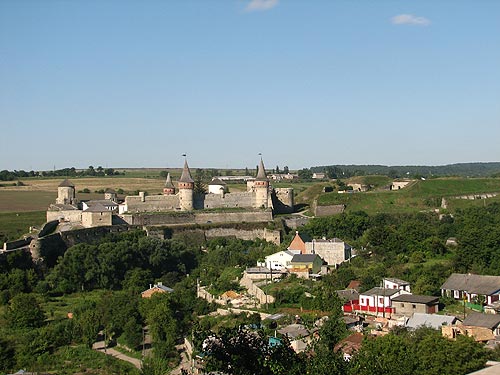
Legend has it that when the Turks destroyed Kam’yanets they decided to rebuild the crumbled fortress. The local people were forced to work, but they constructed a stronghold “not for the Turkish force but for the glory of Christianity.” Crosses taken from their necks were placed under the stones and when there were no more crosses worn against their chests, they made crosses from little branches and blades of grass and immured them in the walls. It is still believed that the Turks did not remain in Kam’yanets because the fortress was “built on crosses.”
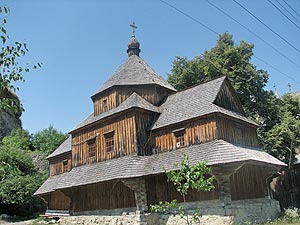 Throughout the long history of the city, people of various cultures and religions settled in Kam’yanets-Podilskyj, transforming Kam’yanets-Podilskyj into a truly unique city. Already in the early Middle Ages there were three communities in Kam’yanets: Ukrainian, Polish, and Armenian. In Kam’yanets-Podilskyj there remain neighborhoods named Ruskyj (Ruthenian) and Polskyj (Polish) folwarks. There are also remains of the Armenian quarter with a square, bell-tower, and a collapsed church. Today Kam’yanets-Podilskyj is home to nearly 100 thousand inhabitants. Many of them are young and students. Kam’yanets is a multi-religious and multi-national city. Poles, Lithuanians, Armenians, Ukrainians, Jews, Gypsies, and Russians consider the city their own. With good reason in the city there is a monument to Seven Cultures and a festival with the same name.
Throughout the long history of the city, people of various cultures and religions settled in Kam’yanets-Podilskyj, transforming Kam’yanets-Podilskyj into a truly unique city. Already in the early Middle Ages there were three communities in Kam’yanets: Ukrainian, Polish, and Armenian. In Kam’yanets-Podilskyj there remain neighborhoods named Ruskyj (Ruthenian) and Polskyj (Polish) folwarks. There are also remains of the Armenian quarter with a square, bell-tower, and a collapsed church. Today Kam’yanets-Podilskyj is home to nearly 100 thousand inhabitants. Many of them are young and students. Kam’yanets is a multi-religious and multi-national city. Poles, Lithuanians, Armenians, Ukrainians, Jews, Gypsies, and Russians consider the city their own. With good reason in the city there is a monument to Seven Cultures and a festival with the same name.
THE HISTORY OF ECUMENISM IN KAM’YANETS
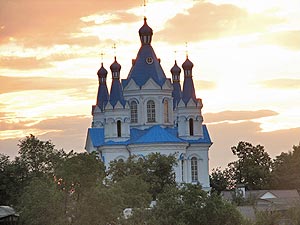 Layers of various religions and cultures are visible in Kam’yanets’ architecture and the religious tolerance of its residences. The locals regardless of their own beliefs feel the following churches their own: the Krestovozdvyzhenska Church on Karvasy Street (today the church belongs to the Ukrainian Orthodox Church), the Holy Trinity Church, which is today being rebuilt by Basilian Monks of the Ukrainian Greek Catholic Church, and the ruins of the Armenian church, where traditionally ecumenical public prayers were held. Furthermore, the Roman Catholic Cathedral of Sts. Peter and Paul with a minaret and Madonna became an essential monument of Kam’yanets Podilskyj.
Layers of various religions and cultures are visible in Kam’yanets’ architecture and the religious tolerance of its residences. The locals regardless of their own beliefs feel the following churches their own: the Krestovozdvyzhenska Church on Karvasy Street (today the church belongs to the Ukrainian Orthodox Church), the Holy Trinity Church, which is today being rebuilt by Basilian Monks of the Ukrainian Greek Catholic Church, and the ruins of the Armenian church, where traditionally ecumenical public prayers were held. Furthermore, the Roman Catholic Cathedral of Sts. Peter and Paul with a minaret and Madonna became an essential monument of Kam’yanets Podilskyj.
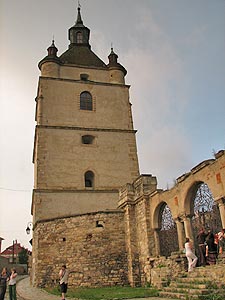 In the Middle Ages the city had its own Guardian, which united the Christians of different confessions—the Armenian Virgin Mary. In 1380 Armenians brought an icon of the Virgin Mary from Khersones to Kam’yanets. From the warning of the Armenian Virgin Mary the city was saved many times from raiders, which is portrayed miraculously in the flames on the walls. For over 300 years the locals have honored the Armenian Virgin Mary. Every Saturday all over Kam’yanets churches and kostels were closed and the whole city went to mass at the Armenian St. Nicholas Church, where at the time the wonder-working icon was kept. The Armenian Virgin Mary united the faithful of different confessions.
In the Middle Ages the city had its own Guardian, which united the Christians of different confessions—the Armenian Virgin Mary. In 1380 Armenians brought an icon of the Virgin Mary from Khersones to Kam’yanets. From the warning of the Armenian Virgin Mary the city was saved many times from raiders, which is portrayed miraculously in the flames on the walls. For over 300 years the locals have honored the Armenian Virgin Mary. Every Saturday all over Kam’yanets churches and kostels were closed and the whole city went to mass at the Armenian St. Nicholas Church, where at the time the wonder-working icon was kept. The Armenian Virgin Mary united the faithful of different confessions.
HISTORICAL COLLISIONS – MINARET WITH A MADONNA
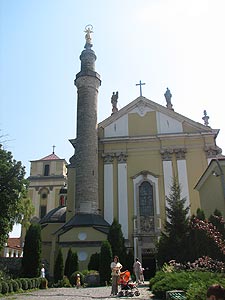 As a consequence of its location Kam’yanets was constantly caught in the whirlwind of events and interests of great cultures and civilizations. Throughout the history of its existence the city was located on the border between European Sarmatia and provinces of Ancient Rome, as well as a border region of the Halytskyj principality and the nomadic steppe. In the Middle Ages Kam’yanets became a spiritual center and the last outpost of Christianity as it stood between the Christian West and the Muslim East. After the Turks definitively left the city, it became a stronghold of Catholicism with a large number of kostels, monasteries, spiritual seminaries, and even a Jesuit Collegium; thus, it transformed into a center with the most Catholic parishes and believers in the Orthodox eparchy of Russia.
As a consequence of its location Kam’yanets was constantly caught in the whirlwind of events and interests of great cultures and civilizations. Throughout the history of its existence the city was located on the border between European Sarmatia and provinces of Ancient Rome, as well as a border region of the Halytskyj principality and the nomadic steppe. In the Middle Ages Kam’yanets became a spiritual center and the last outpost of Christianity as it stood between the Christian West and the Muslim East. After the Turks definitively left the city, it became a stronghold of Catholicism with a large number of kostels, monasteries, spiritual seminaries, and even a Jesuit Collegium; thus, it transformed into a center with the most Catholic parishes and believers in the Orthodox eparchy of Russia.
The centuries-long history of the city was difficult, sometimes tragic. In the middle of the XIII century the city suffered under the Mongol-Tatar conquerors. In the XIV century Podillya along with Kam’yanets was captured by Lithuanian princes. In the XV century it was won by the Poles. In 1463 Kam’yanets became a royal city and a center of the Podilskyj voivodship. Each rule left its traces in the culture, architecture, and mentality of the population. Then in 1672 Podillya was conquered by the Turks. Their 27-year-long rule over Kam’yanets left a significant imprint on the city. That year Islam became the ruling religion.
On August 24, 1672, the Turkish Sultan Mahomet IV in a celebratory procession, which went through the Ruski Gates, entered Kam’yanets. Dressed in green, the sultan went to the Cathedral Kostel and with a flag with a date of when Kam’yanets was taken, entered the temple. In the kostel, which was transformed into a mosque, ritual prayers were held five times a day, and instead of the usual sound of bells, in the city echoed the first voice of a muezzin. A minaret was built on the kostel and thus the Turks created a mosque from the basis of a Catholic church. Furthermore, some of the Orthodox churches were returned to the Catholics. This provoked indignation from the Ukrainian population. The Armenians were allowed to pray in their churches under one condition: they had to take down their bells since the ringing frightened and drove away the souls of dead Muslims who fly in over their brothers.
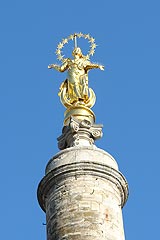 When the Turks left the city, Kam’yanets again became Christian, and the kostels that had been transformed into mosques returned to their original appearances. Only the minaret built on the cathedral was not taken down; instead a gilded statue of the Virgin Mary was placed on top. This was to symbolize the victory of Christianity over Islam. The minaret and Madonna continue to stand in Kam’yanets. This only unification of different religions is visible from all corners of the city. The unusual ensemble has been a hallmark of the city for several centuries.
When the Turks left the city, Kam’yanets again became Christian, and the kostels that had been transformed into mosques returned to their original appearances. Only the minaret built on the cathedral was not taken down; instead a gilded statue of the Virgin Mary was placed on top. This was to symbolize the victory of Christianity over Islam. The minaret and Madonna continue to stand in Kam’yanets. This only unification of different religions is visible from all corners of the city. The unusual ensemble has been a hallmark of the city for several centuries.
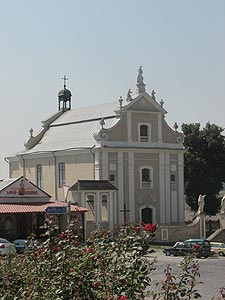 Other than this in Kam’yanets exist many examples of interpenetration of cultures and religions. Therefore, depending on who ruled the city, churches were reconstructed as kostels or vice versa. For example, when Right Bank Ukraine became part of the Russian Empire, the space of the former Franciscan Monastery was accommodated as an Orthodox building and consistory. The kostel was remade into an Orthodox Church of Dormition of the Virgin. On the bell-tower, designed by Jan de Witte, was built a marquee roof of Baroque contour, and on top was erected a large spherical cupola on a wooden cylinder. On the second level of the eastern building, above the former Armenian chapel, was established a small church Rizdvo Khrystove.
Other than this in Kam’yanets exist many examples of interpenetration of cultures and religions. Therefore, depending on who ruled the city, churches were reconstructed as kostels or vice versa. For example, when Right Bank Ukraine became part of the Russian Empire, the space of the former Franciscan Monastery was accommodated as an Orthodox building and consistory. The kostel was remade into an Orthodox Church of Dormition of the Virgin. On the bell-tower, designed by Jan de Witte, was built a marquee roof of Baroque contour, and on top was erected a large spherical cupola on a wooden cylinder. On the second level of the eastern building, above the former Armenian chapel, was established a small church Rizdvo Khrystove.
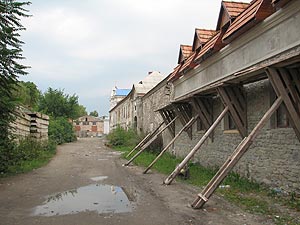 But the most cultish structures from all confessions suffered during the Communist times. At the end of the XIX century in Kam’yanets there were close to 50 structures and of that today there remains only a small fraction. Today in the city stands a Franciscan Monastery in ruins, with an Orthodox church built to it. Neither the Armenian chapel nor the Church of Rizdvo Khrystove remain. The Bolsheviks destroyed the Church of Our Lady of Kazan, which was the first in Podillya and where the liturgy was read in the Ukrainian language. The Lutheran church now houses a sport school, and in the synagogue works a restaurant…
But the most cultish structures from all confessions suffered during the Communist times. At the end of the XIX century in Kam’yanets there were close to 50 structures and of that today there remains only a small fraction. Today in the city stands a Franciscan Monastery in ruins, with an Orthodox church built to it. Neither the Armenian chapel nor the Church of Rizdvo Khrystove remain. The Bolsheviks destroyed the Church of Our Lady of Kazan, which was the first in Podillya and where the liturgy was read in the Ukrainian language. The Lutheran church now houses a sport school, and in the synagogue works a restaurant…
However, many monuments were renovated and are returning to life, and there is truly something to see in the city!
